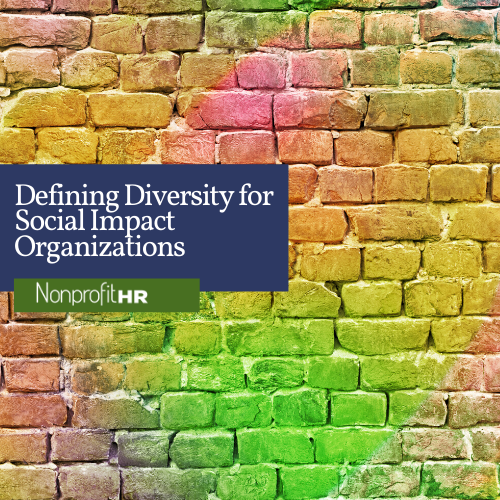WTOP: 5 ways nonprofits can…
By Leslie Beckbridge and Destiny Kibalama
As we near the end of the year, many organizations are examining their strategic plans and making determinations for the coming year. In human resources, this likely involves a conversation with leadership regarding how many new staff will be needed. During this process, it would be a mistake to underestimate the strategic role of social media in your recruitment. To help you think about social recruiting, I sat down with Nonprofit HR’s Manager of Talent Acquisition Services, Destiny Kibalama, to get some insight and advice. Since nonprofit organizations rely heavily on social media to bolster recruitment processes because it is low-cost and high-impact, we wanted to offer this insider’s look from a nonprofit point of view.
Question: How do you see social media impacting the candidate experience in 2014 and beyond?
Destiny: Social media makes everything more transparent and reduces boundaries between employers and candidates, so I can see the interview process and interactions throughout the hiring process becoming more personal. Organizations can use social media to save time during their interview process by gathering information without even contacting an applicant directly. When employers have already seen candidates’ LinkedIn, Facebook and Twitter pages before they even speak to them, there are going to be interview questions that they may not need to ask (like, what do you do with your free time?). A recruiter can also get a good indication of who will be a good fit based on the social media presence of the candidate. Someone who writes poorly on their personal account is not likely to be a strong writer professionally, for example. Ideally, this means that hiring managers will be able to make better hiring decisions based on cultural fit.
Question: Do you think that social media use among recruiters and hiring managers will continue to increase?
Destiny: Yes. People continue to join social media and the number of social sites is also on the rise.[i] We are seeing more sector- and industry-specific communities online that recruiters can target to reach talent within smaller populations. Facebook’s new Graph search also allows us to search based on interests, which can help with making focused appeals to only specific talent areas.
Question: What is one technique that you hope will become a trend in 2014?
Destiny: Facebook’s new Graph search feature. These tools that give employers access to people’s networks, interests and work history are definitely a requirement in any social recruitment strategy. This type of network has the capability to tell me much more about a person’s true drive than just their resume. Of course, figuring out appropriate privacy settings and distinguishing between personal and professional will always be a big question on both sides of the equation. Candidates do not want to be in a position of having too much information available, and employers should not make the mistake of trying to dig too deeply and crossing legal lines. But, as I said above, this era of information overload suggests that the distance between personal and professional worlds is diminishing. The demand for transparency is going to require that employers and employees decide where to draw the line. For both, a good guideline is that if you don’t want the other group to see it, it shouldn’t be online at all.
Question: What general advice do you have for recruiters, hiring managers and HR executives and practitioners with regard to social recruiting?
Destiny: I think I would stress that you do not have to jump in all at once. Take one piece at a time according to what you can manage and then build the habit so that you have a consistent presence and an efficient system. It is critical to find a balance between pushing content and jobs out to the network and actually interacting with people because without both, you will have limited impact. Recruiters should be seen as people, not as job-pushing robots. This relies on personalizing your online presence so that people will identify with you and want to work with you. I would also advise HR people to work with their marketing people to keep up with this endeavor. This will ensure that posts fit the brand and will keep active and passive candidates engaged with the whole organization.
Question: What are some tools that you recommend using for social recruiting?
Destiny: There are so many that can help save time and those are my favorites because I feel like I never have enough time. Once you have your basics (Facebook, LinkedIn, Twitter) set up, you can use tools like HootSuite and TweetDeck to streamline your activity. These tools allow me to post to all my accounts in one place. They also have scheduling features so that I can set up posts to go out at optimal times for maximum reach. Google Alerts is another great tool that can help find exciting content to push out and keep your presence active.
For more on strategies and tools for using social media in recruitment, see this blog post and the full whitepaper from Senior HR Consultant, Alicia Schoshinski.





























